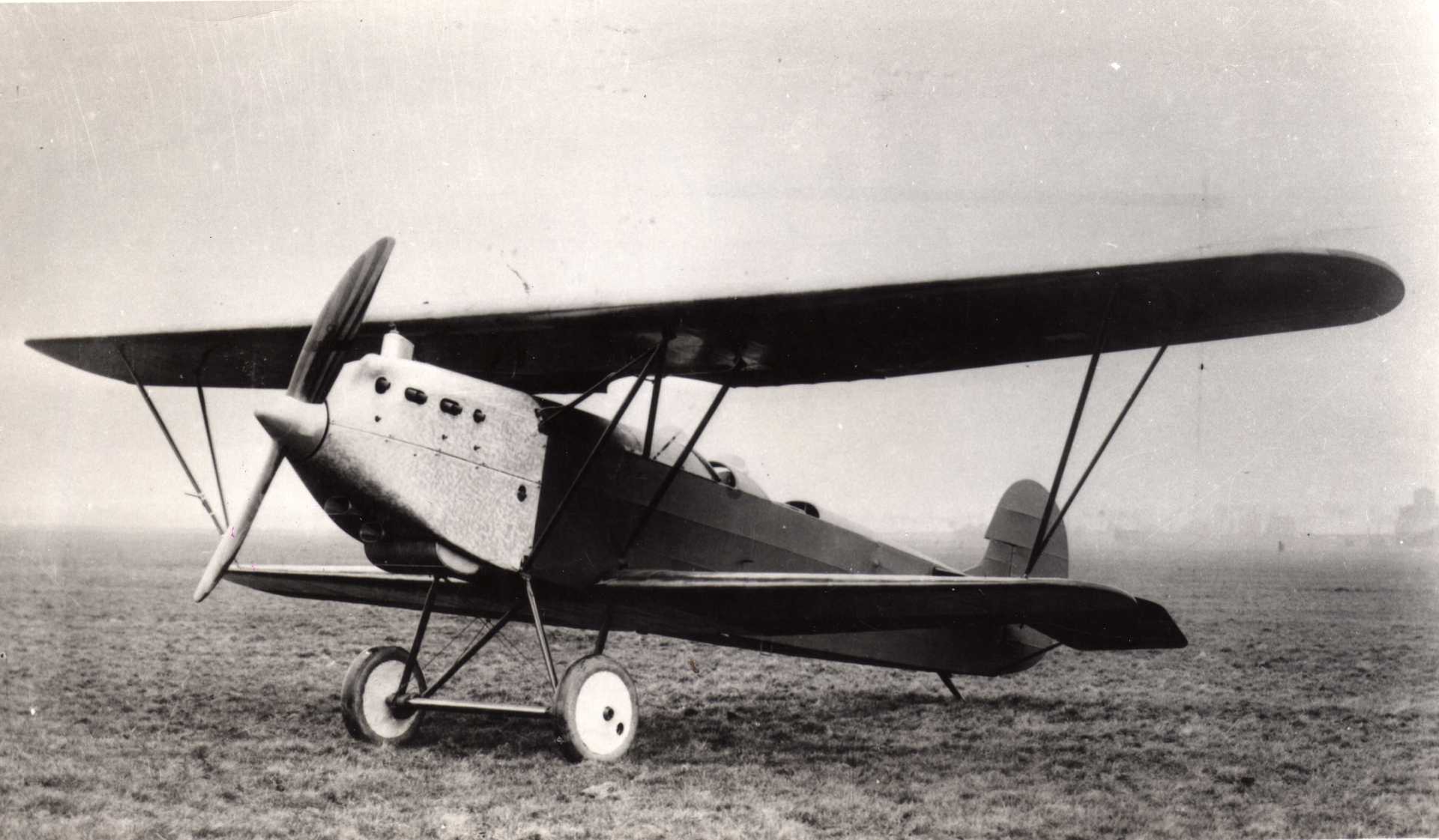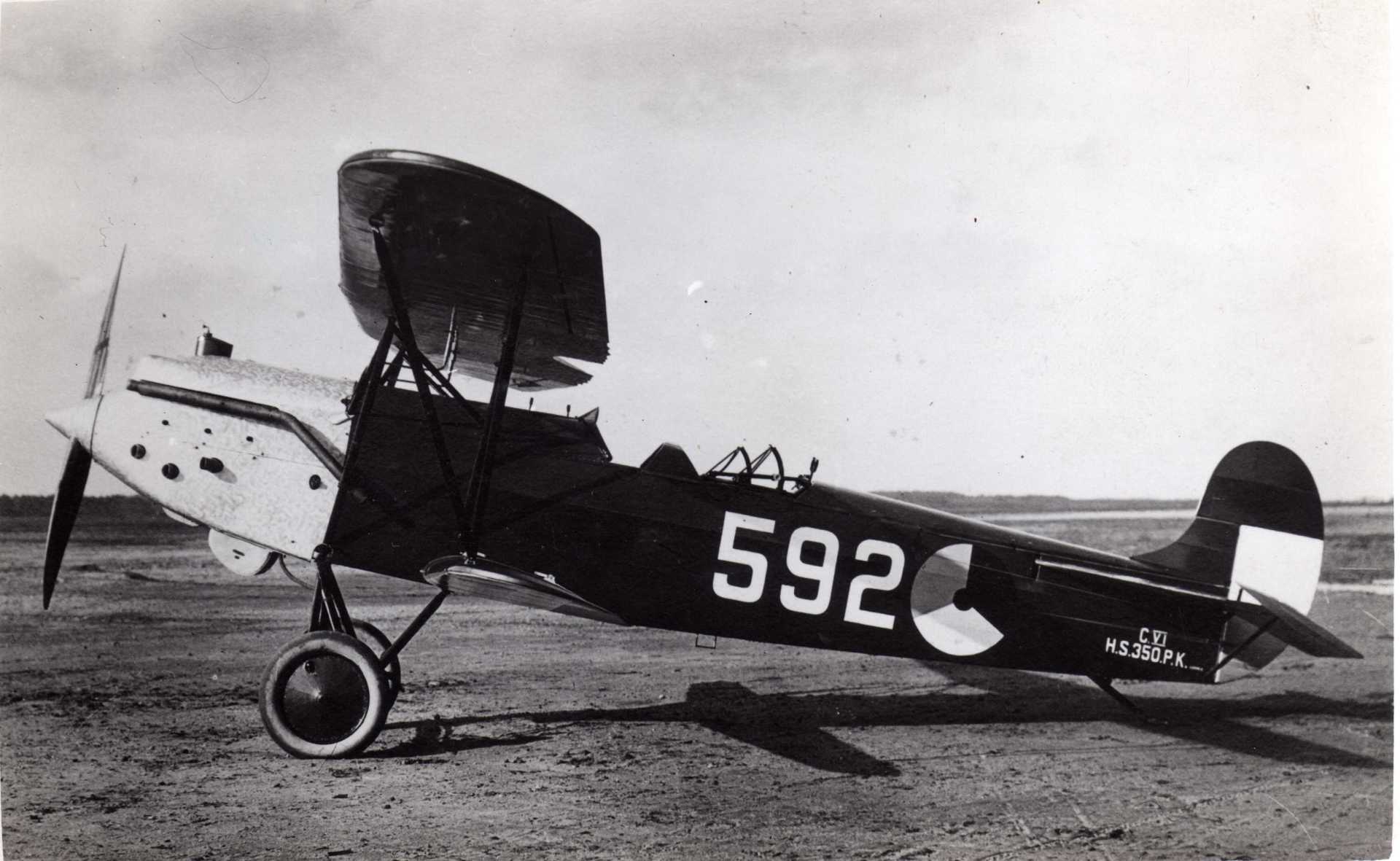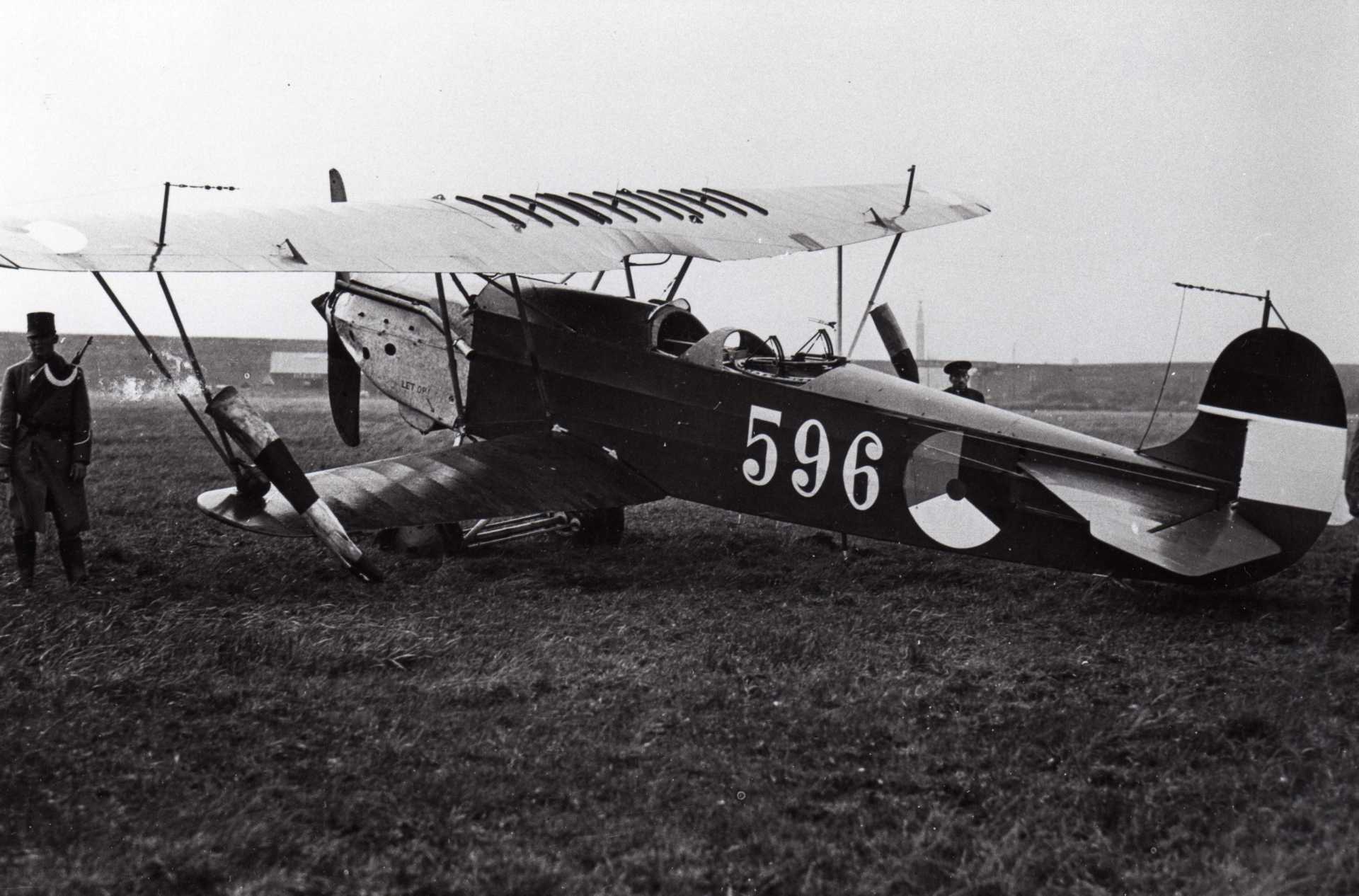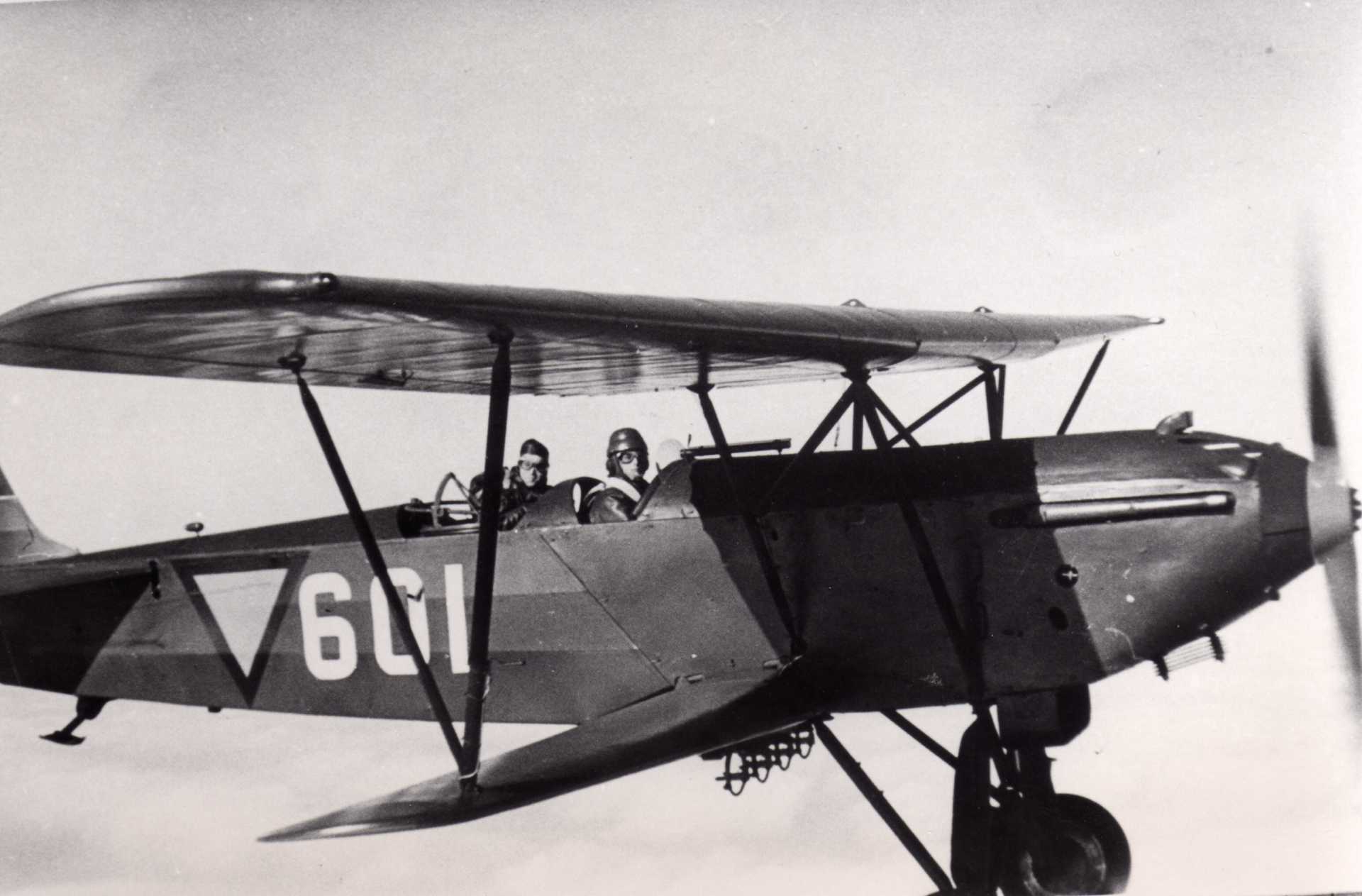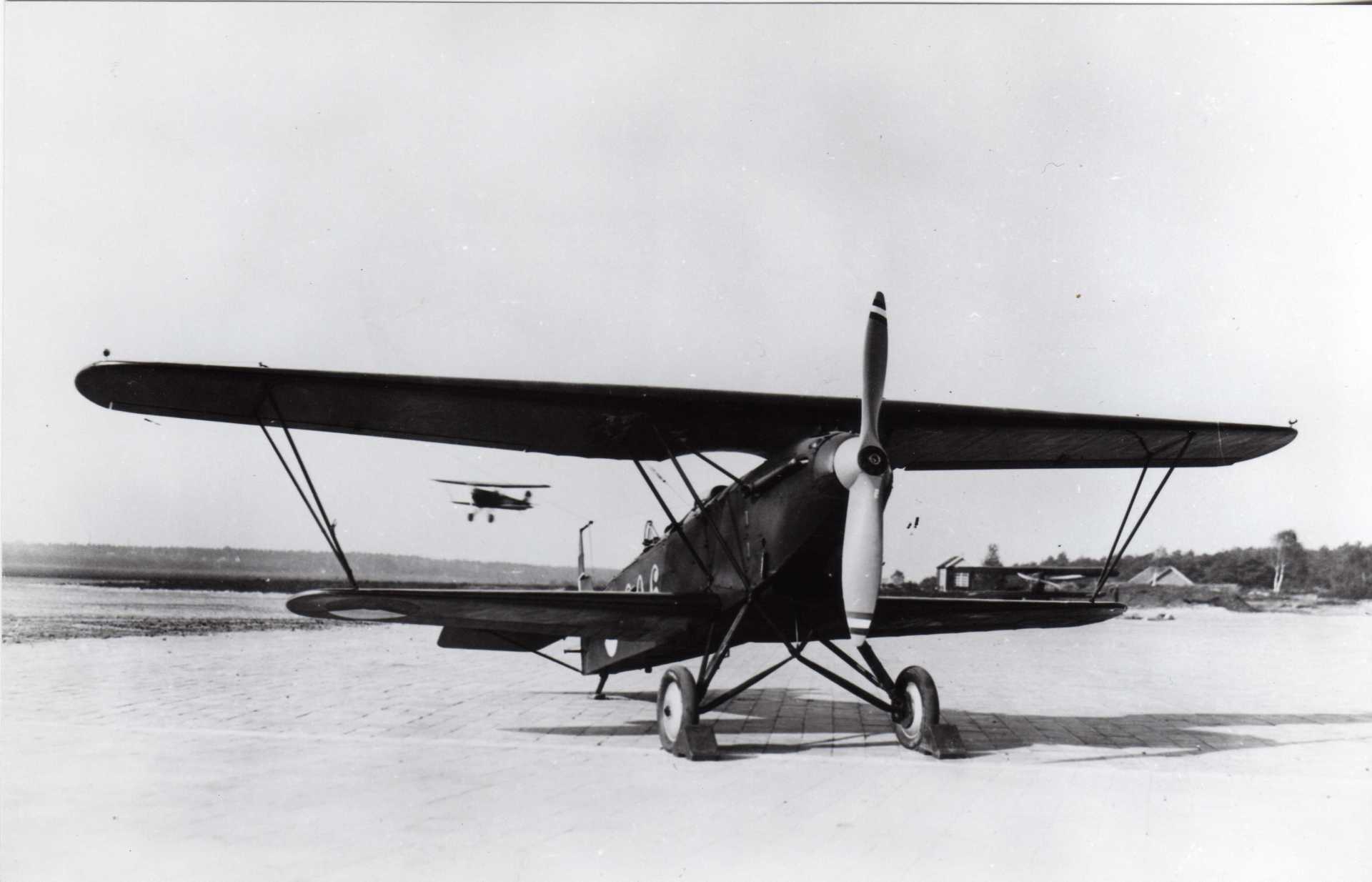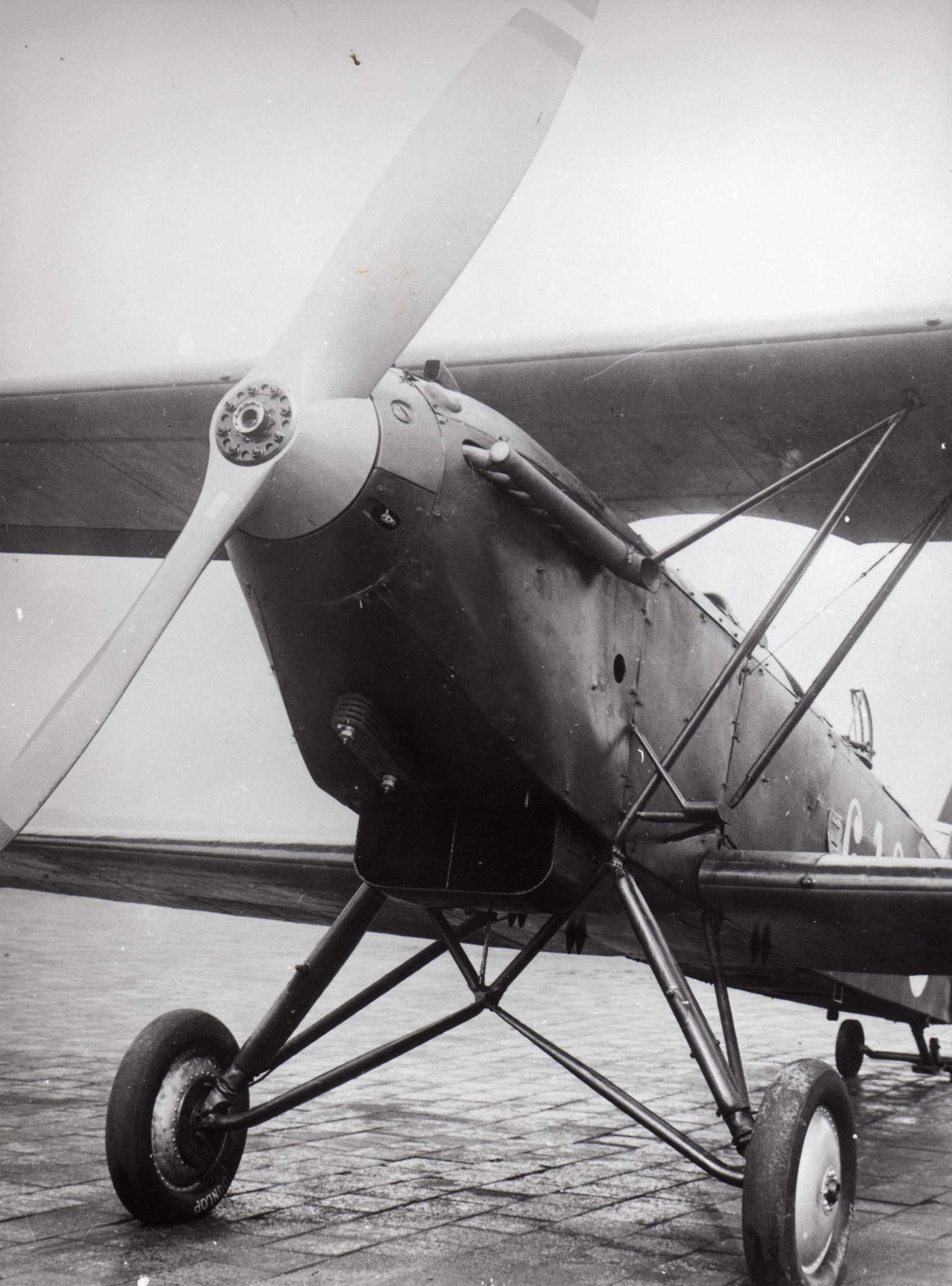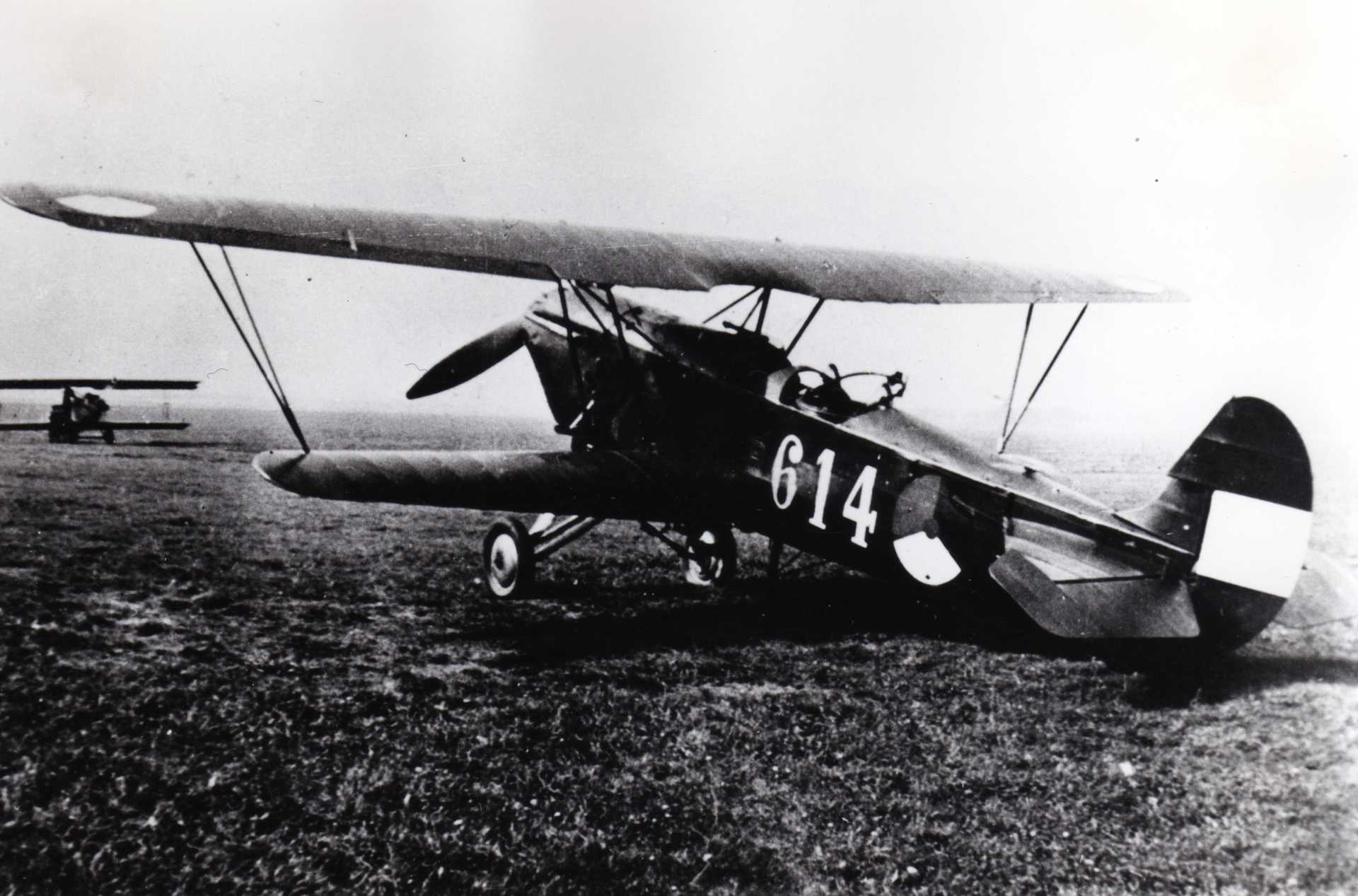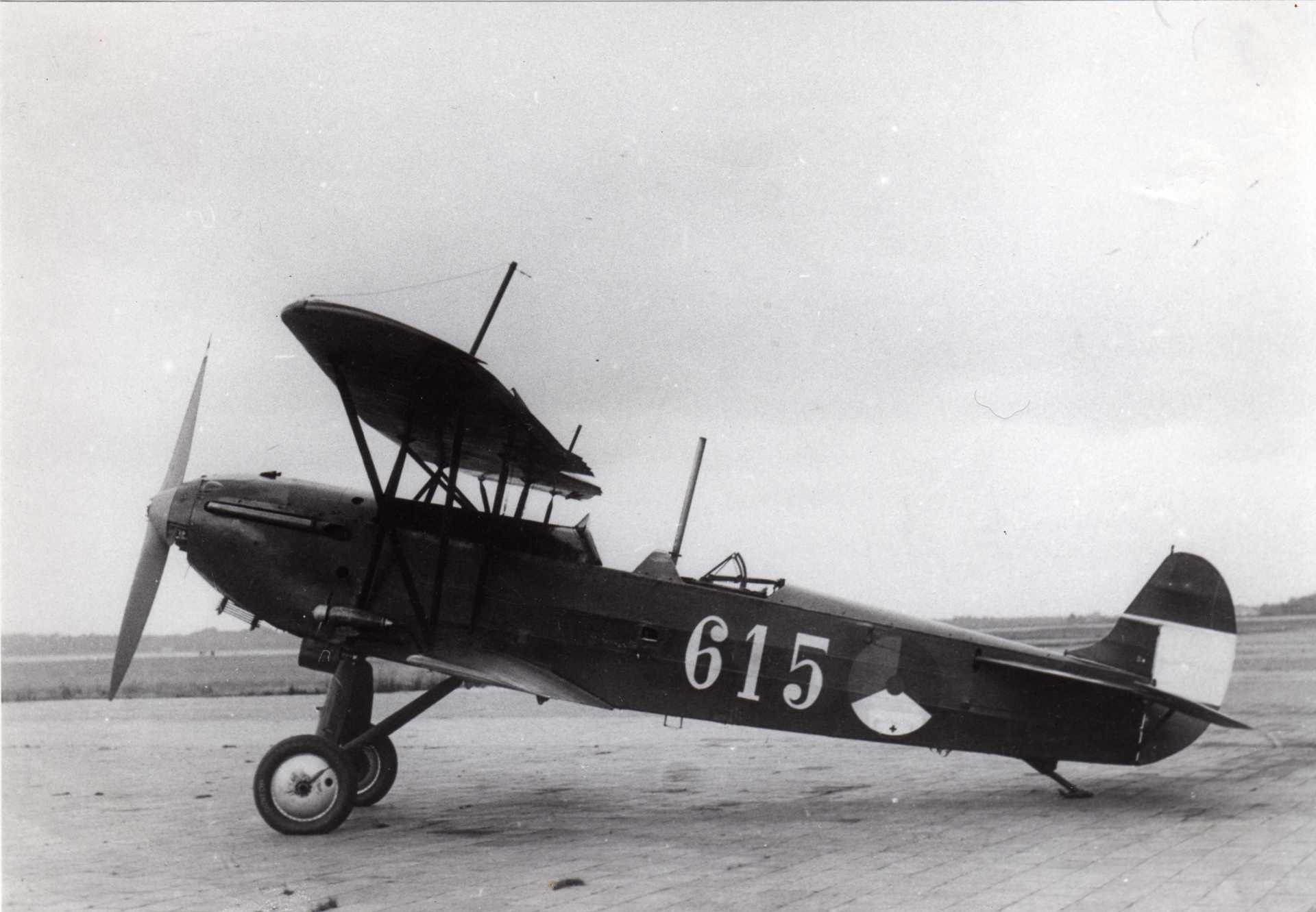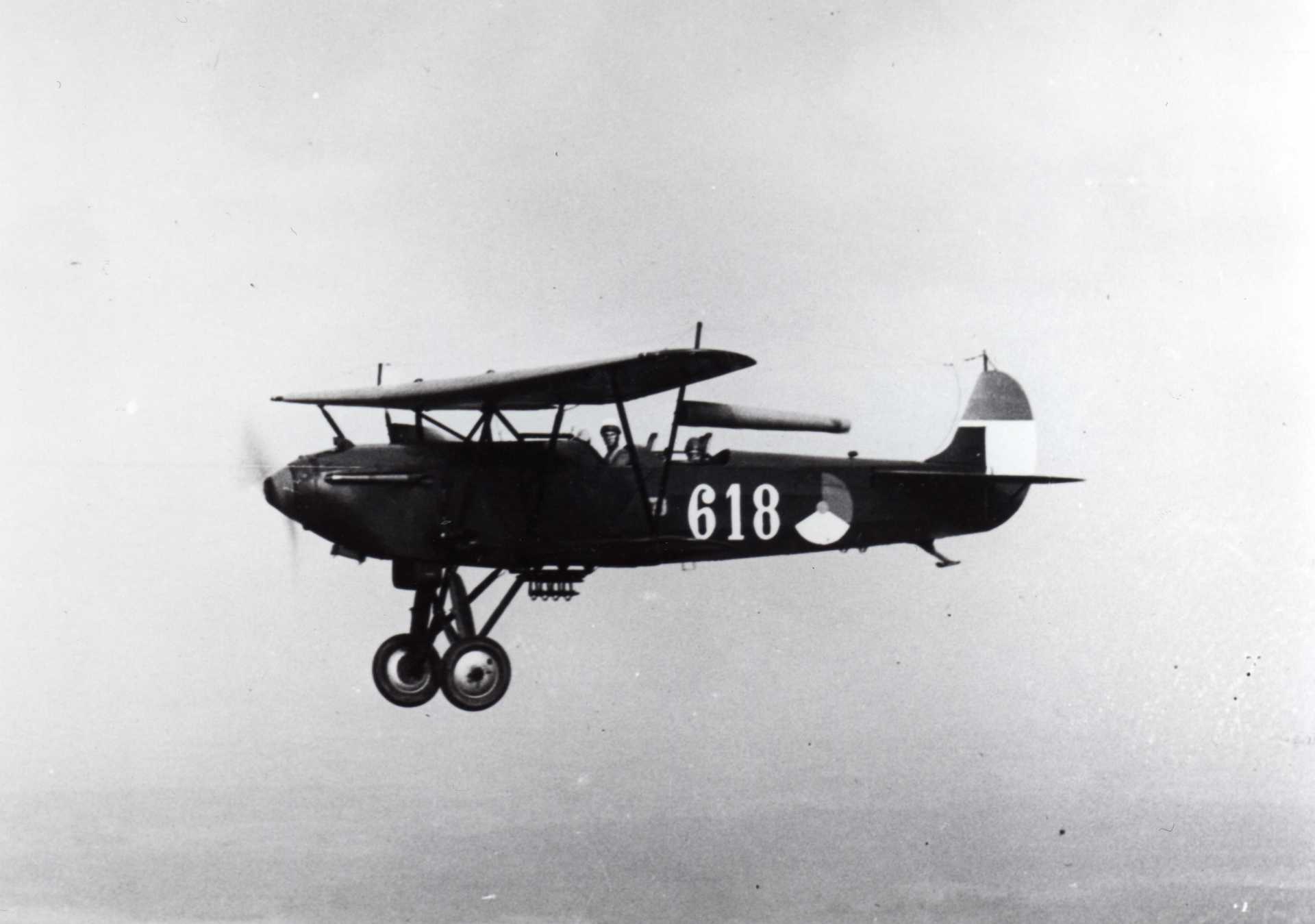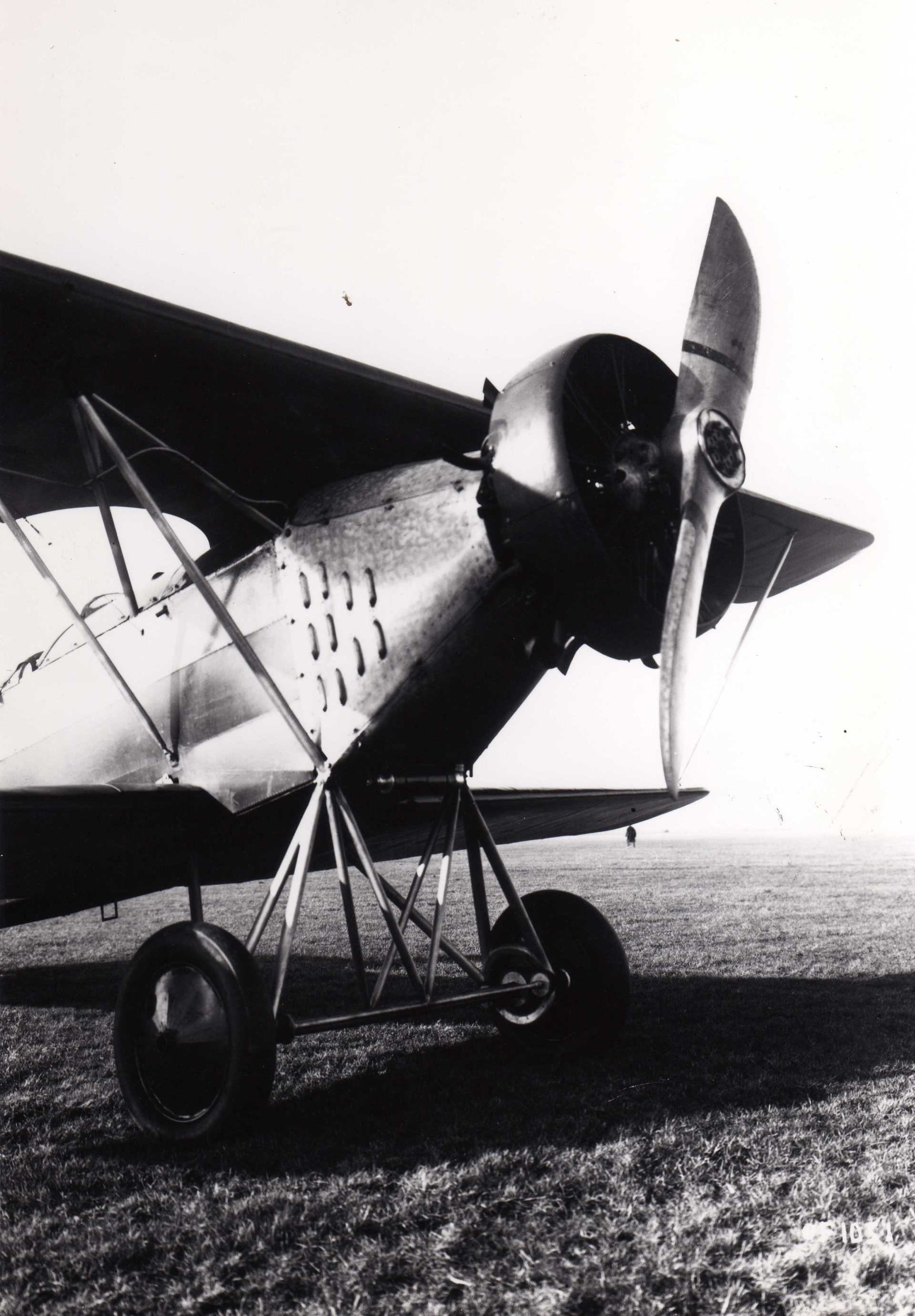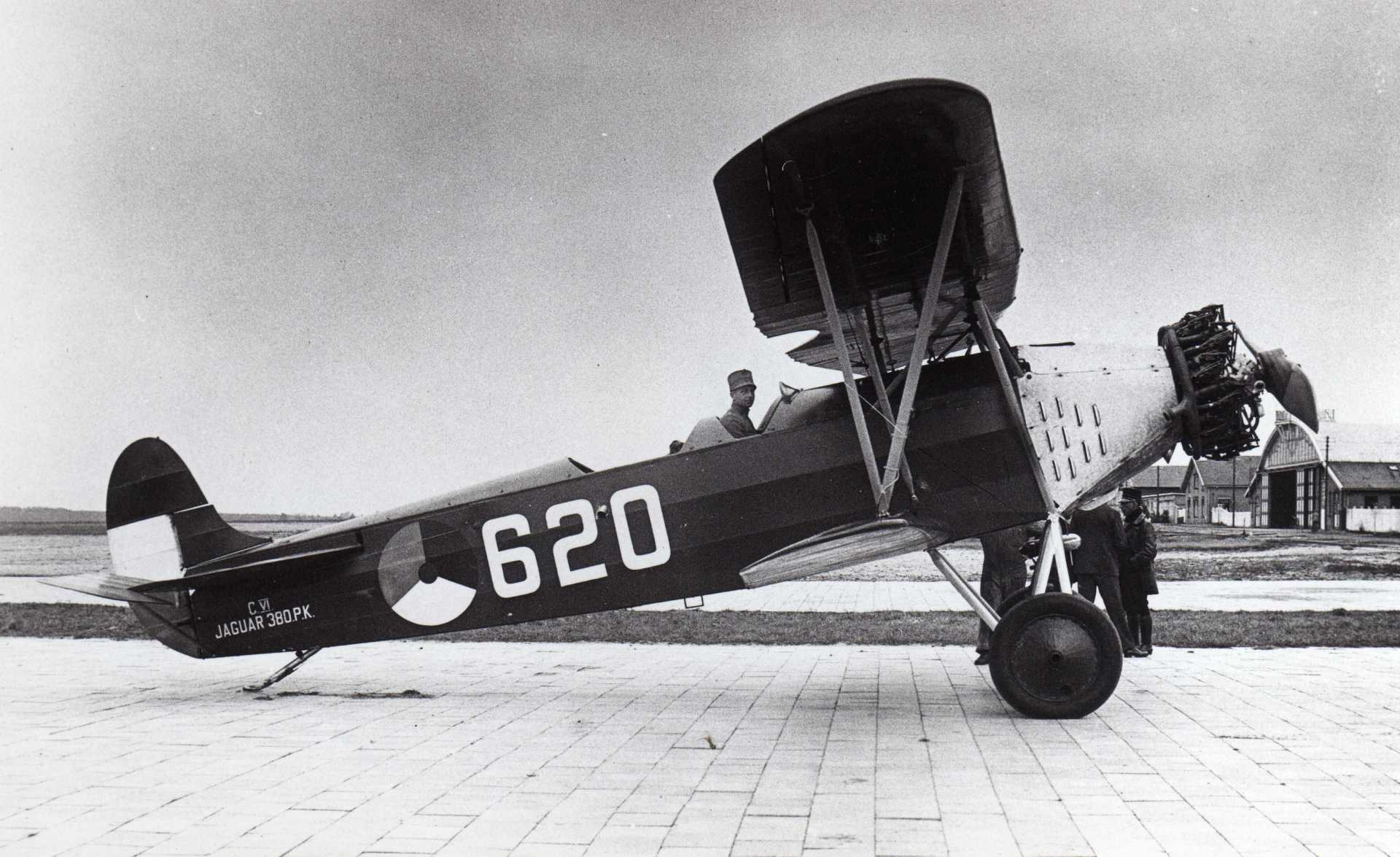Fokker C.VI
The designation C.VI has been specially used by LVA for this lighter version of the C.Vd.
Deliveries are made from 1925 with registration 590 to 608.
Furthermore, in 1926 the 609 to 615 and in 1928 the 616 to the 620.
All supplied with the lighter 350 hp Hispano-Suiza engine.
Except the 619 and 620 because they are equipped with the 380 hp Amstrong Siddeley Jaguar engine.
The still usable C.VI aircraft were converted in 1934 to C.Vd with the 450 hp Hispano Suiza engine.
Click on the photo to enlarge the photo
-
01
ButtonHere the prototype of the C.VI type designation, which was appointed by LVA itself.
Possibly temporarily with a 450 hp Lorraine Dietrich engine.
Serial construction eventually uses the 350 hp Hispano Suiza engine.
The last two aircraft will (temporarily) receive the Amstrong Siddeley Jaguar engine of 380 hp.
In 1934, the remaining C.VI aircraft are equipped with the 450 hp Hispano Suiza engine.
Then the type designation C.VI disappears and it gets the type designation C.Vd.
-
02
ButtonThe 592 of LVA with tighter grades due to a repair in March 1940.
Placed at Ruijgenhoek airport in May 1940.
Shot down after a bombing mission on May 12, 1940 near Rhenen province Gelderland.
Sgt pilot G Roeloffzen and Sgt observer J. Holtz survive the roll over and total destruction of the C.Vd.
-
03
ButtonThe Aviation Department decides to purchase a lighter version in addition to the Fokker C.Vd.
The 350 hp Hispano Suiza is used as the engine. The LVA calls it Fokker C.VI.
Delivery takes place in 4 periods, from 1925 to 1928.
There will be 31 scouts, which brings the total of all C.V aircraft to 77.
Emil Meinecke becomes Fokker's test pilot.
The registrations are 590 to 620, of which the 619 and 620 receive a 425 hp Amstrong Siddeley engine.
Many of the C.VI scout plains are still in service during the May days of 1940 when the Germans invaded.
The first delivered plane, the 590, crashed in 1937 near Wageningen (Gelderland).
Here a picture of the 592.
-
04
ButtonThe 596 of LVA at Ypenburg airport, partly sunk in the field.
This happened after a exercise to test connections, see the windbags.
It fell into German hands in the May days of 1940.
Some C.VI data.
Empty weight 1350 kg Total weight 1900 kg
wingspan 12.5 m, length 9.5 m
wing area 28.8 m ^ 2, max speed 242 km / h
cruising speed 205 km / h.
-
05
ButtonThe 598 of LVA at Soesterberg airport, already with orange tail and sharper numbers. So in the period 1939-1940.
Photo taken from under a Focke Wulf FW 58 Weihe, also in LVA service.
Here some characteristics of the Fokker C.VI
curb weight 1350 kg fly weight 1900 kg
wingspan 12.5 m, length 9.5 m
height 3.5 m, vent area 28.8 m ^ 2
max speed 242 km / h, landing speed 97 km / h
cruising speed 205 km / h, ceiling 6000 m
flight range 800 km, armament 2 fixed and 1 movable machine gun.
-
06
ButtonThe 599 from LVA after a serious roll-over. The wings and wheels have been completely destroyed.
Nevertheless, the LVA Aviation Company at Soesterberg managed to repair the aircraft.
This C.VI was also still in service with the German invasion in 1940.
The numerical indication on the plane is already more modern.
How can you stand there as a pilot, with a semblance of pride?
-
07
ButtonSome fixed data from the C.VI.
Flight ceiling 6000 m flight range 800 km.
Armament 2 fixed and 1 movable machine gun.
Here the 600 from LVA at Soesterberg airport.
On May 9, Lt-pilot J Schouw flips over when landing at Hilversum Airport.
There is talk of a placement of this plane at Theehuis Soesterdal (a restaurant with a collection of airplanes).
-
08
ButtonThe Fokker C.VI 601 in the mobilization period 1939-1940, with the orange triangle and tail.
Engine and landing gear were modernized in 1934.
A 450 hp Hispano Suiza engine replaces the 350 hp version.
Often the type name becomes C.Vd.
-
09
ButtonThe 603 from LVA, delivered as Fokker C.VI in 1925 with Hispano-Suiza 350 hp engine.
The aircraft was completely renewed in 1934 as C.Vd. It now has radio link equipment and heavier armament.
Furthermore, it has on-board lighting and the new 450 hp Hispano-Suiza engine.
In May 1940, the aircraft was still used during the German invasion.
It crashed at airport Haamstede, Zeeland.
-
10
ButtonThe 604 in this photo was delivered with a wooden propeller. Delivered to the LVA at Soesterberg Airport in 1925.
As C.VI equipped with a 350 hp Hispano Suiza engine.
Renovated in 1934 to C.Vd with 450 hp Hispano Suiza engine.
The plane fought during the German invasion in May 1940 and crashed at Gilze Rijen Airport, North Brabant.
-
11
ButtonThe Fokker C.VI 606 of LVA as C.Vd at Soesterberg airfield.
Because the plane has since been converted after 1934 with the Hispano Suiza engine of 450 hp.
During the German invasion in May 1940, it crashed on Schouwen-Duiveland, Zeeland.
-
12
ButtonThe 610 was delivered as C.VI to the LVA in 1926 and now equipped after 1934 with a Rolls Royce engine of 650 hp.
Crashed during the German invasion in May 1940 near Deurne, Noord-Brabant.
The photo is from before 1939 and taken at Soesterberg airport.
-
13
ButtonThe 614 of LVA Aviation Department at Soesterberg Airport.
On May 10, 1940, Sgt-pilot K. Zwarthoed first flies from Gilze Rijen airport to Haamstede Province Zeeland Airport.
And from there to Waalhaven airport for a bombing flight.
He fights with a German Messerschmitt 110 and crash-lands at Sommelsdijk Goeree Overflakkee Provincie Zuid Holland.
-
05.1
ButtonThe C.VI 614 from LVA is delivered in 1926 and is from the series 609 to 615.
In 1934 the plane was already equipped with the 450 hp Hispano Suiza engine and renamed as Fokker C.Vd.
-
05.2
ButtonThe 615 of the LVA, delivered in 1926 as Fokker C.VI.
Renovated here in 1934 and therefore again called C.Vd.
Equipped with the 450 hp Hispano Suiza engine.
This aircraft has been used for years at Waalhaven Rotterdam Airport.
It was intended for training the so-called MONTHLY FLIES.
Not professional but voluntary aviators from commercial and sport aviation.
Note the extra radio equipment on the plane.
-
06
ButtonThe 618 with Hispano Suiza 350 hp engine.
On May 13, 1940 caught fire at Haamstede Airport in Zeeland.
-
06.1
ButtonThe C.VI 618 from LVA, the Dutch Air Force, was one of the last of the 1928 series.
Already equipped with the 650 hp Rolls Royce engine.
Notable are the wind sacks that are used in exercises.
In this case in orange, which indicates connection exercises.
The antenna wires of the radio are also clearly visible.
-
14
De NACA streamline cowlingThe last LVA C.VI aircraft from 1928 are the 619 and 620 with Amstrong Siddeley Jaguar engines of 380 hp.
It is a test and in 1934 the Hispano Suiza engines of 450 hp still come.
Here one of these aircraft with NACA hood at Soesterberg airport.
-
15
ButtonHere the 620 from LVA with NACA cover removed.
This aircraft was severely damaged by the Germans at Gilze Rijen airport and left behind.
The also mentioned 619, is fully involved in battle by Sgt aviator A. Van Liempt.
On May 10, 1940, the 619 flies from Ruijgenhoek airport to naval air base Valkenburg for an attack.
An exploratory flight to the Grebbeberg between Ede and Arnhem followed on 11 May 1940.
On May 12, 1940 a bombing flight follows on the Rijksweg Delft-Rotterdam.
Then a reconnaissance flight to the Wons position.
Finally, a bombing flight on the Grebbeberg.
There Van Liempt is knocked down by a Messerschmitt 109.
Still, he manages to make an emergency landing around 7 p.m.
On the ground, Van Liempt is mercilessly executed by the Germans.
Lt. observer / gunner T. Vrins is taken prisoner of war.
-
16
ButtonThe FIVE FINGERS ON ONE HAND, the famous LVA stunt team.
Active in various compositions from the late twenties, early thirties at Soesterberg airport.
Here the C.VI appliances 593 –596-600 and 605.
In their midst the leader Kap.vlieger W. Versteegh with his personal plane the 315, a C.Vd.
-
17
ButtonA rather sad temporary storage of C.VI and C.Vd fighter scouts at Soesterberg airport.
The LVA only got more financial possibilities in the second half of the 1930s.

